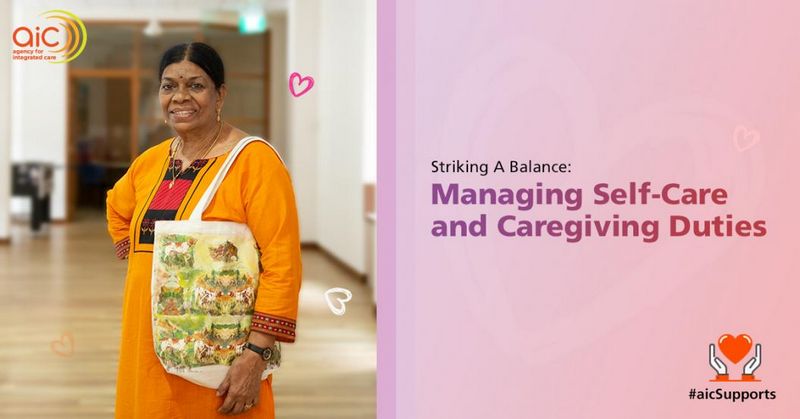
Managing Guilt: Striking a Balance in Pursuit of Indoor Comfort
Indoor comfort is something we all strive for in our daily lives. Whether it’s the scorching heat of summer or the freezing chill of winter, we constantly seek ways to achieve the perfect balance of temperature to ensure our utmost comfort.
But in this pursuit of comfort, do we ever stop and think about the guilt that may come along with it? The guilt of wasting precious resources or contributing to climate change? It’s a challenge we all face, but luckily, there are solutions.
Find Your Perfect Temperature
Managing guilt begins with finding your perfect temperature. This means striking a delicate balance between staying warm in the winter and cool in the summer without compromising the environment or your energy bills.
But how do you find that perfect temperature?
It starts with understanding your preferences and your home’s unique characteristics. Do you prefer a cozy and warm environment, or do you thrive in a cool and breezy atmosphere? Assessing these factors is key to finding your ideal indoor climate.
Once you’ve determined your temperature preferences, it’s time to explore the different options available to achieve that balance.
Invest in Smart Thermostats
Smart thermostats are revolutionizing the way we manage our indoor climate. With features like programmable schedules, remote control capabilities, and energy usage tracking, these devices can help you strike a balance between comfort and guilt-free living.
These thermostats analyze your energy usage patterns and adjust the temperature accordingly, ensuring minimal energy waste while keeping you comfortable. Say goodbye to the guilt of excessive energy consumption!
Upgrade Your Insulation
A well-insulated home is a key component in maintaining indoor comfort and reducing guilt. By ensuring your home is properly insulated, you can minimize heat loss during the winter and prevent heat gain during the summer, ultimately reducing the need for excessive heating or cooling.
Investing in insulation not only saves energy and reduces guilt but also enhances the overall comfort of your home. You’ll enjoy a cozy environment all year round.
Embrace Natural Ventilation
Incorporating natural ventilation techniques into your home design can also contribute to guilt-free indoor comfort. By strategically placing windows and utilizing cross ventilation, you can bring in fresh air, reduce the need for air conditioning, and create a healthier living environment.
Imagine the satisfaction of enjoying a cool breeze on a warm summer day without the guilt of excessive energy consumption. It’s possible with the right ventilation strategies!
Conclusion
Striking a balance between pursuit of indoor comfort and managing guilt doesn’t have to be a daunting task. By finding your perfect temperature, investing in smart thermostats, upgrading your insulation, and embracing natural ventilation, you can enjoy the utmost comfort while reducing your environmental impact.
Don’t let guilt hinder your pursuit of comfort. Take action today and find the perfect balance for guilt-free indoor living!
Understanding guilt
In the pursuit of indoor comfort, it is not uncommon to experience feelings of guilt. Striking a balance between our desire for a comfortable living space and our guilt over the environmental impact can be a challenging task.
Guilt may arise from the knowledge that our actions contribute to climate change and energy consumption. We may feel guilty for using energy-intensive appliances or keeping our homes at a temperature that requires the use of heating or cooling systems.
However, it is important to remember that guilt alone does not solve the problem. Instead, managing guilt involves finding ways to reduce our environmental impact while still maintaining a comfortable indoor environment.
One way to strike this balance is by practicing energy-efficient habits, such as using programmable thermostats, sealing drafts, and properly insulating our homes. These small changes can help to reduce energy consumption and lower our carbon footprint.
Additionally, supporting renewable energy sources can alleviate guilt by directly contributing to a cleaner and more sustainable energy future. Investing in solar panels or choosing energy providers that prioritize renewable energy can make a significant difference.
It is also important to remember that guilt is a natural emotion and should not consume us entirely. Instead, we can channel our guilt into positive action by educating ourselves and others on sustainable living practices and advocating for policies that promote environmental responsibility.
By understanding and managing guilt, we can find a balance between our pursuit of indoor comfort and our responsibility to the environment, ultimately creating a more sustainable future for ourselves and future generations.
The pursuit of comfort
When it comes to managing our comfort, the pursuit can often be a delicate balance. We all strive for that perfect temperature, the ideal environment that allows us to relax and unwind.
Yet, in our quest for comfort, there can sometimes be an underlying sense of guilt. The guilt of indulging in luxurious amenities or spending too much energy to maintain our desired temperature.
However, striking a balance between our comfort and environmental impact is possible. By making conscious choices and opting for energy-efficient solutions, we can both enjoy our comfort and lessen our ecological footprint.
One way to achieve this balance is by investing in smart home technology. With smart thermostats and sensors, we can optimize our indoor temperature and energy consumption. This not only ensures our comfort but also reduces energy waste and saves on utility bills.
Additionally, making small adjustments in our daily habits can make a big difference. Setting our thermostats a few degrees lower during winter or higher during summer, and layering clothing accordingly, can help us reduce our energy consumption without sacrificing comfort.
Furthermore, choosing eco-friendly materials for our home decor can contribute to our pursuit of comfort while being mindful of the environment. Opting for sustainable materials like bamboo or reclaimed wood not only adds a touch of luxury to our space but also helps reduce deforestation and carbon emissions.
In conclusion, the pursuit of comfort doesn’t have to come at the expense of guilt or environmental impact. By managing our comfort and striking a balance with sustainable choices, we can create an indoor environment that is both luxurious and eco-friendly.
The impact of temperature
Indoor temperature plays a crucial role in our overall comfort and well-being. Striking the right balance between warmth and coolness is essential in managing guilt associated with our pursuit of indoor comfort.
When the temperature is too high, we may feel sluggish and uncomfortable, leading to decreased productivity and difficulty concentrating. On the other hand, when the temperature is too low, we may shiver and find it hard to focus, resulting in a decrease in our ability to perform tasks efficiently.
Studies have shown that maintaining an optimal temperature can have a positive impact on our mood and cognitive function. It can help enhance our overall well-being and make us feel more at ease in our indoor environments.
Furthermore, the impact of temperature extends beyond personal comfort. Managing guilt also involves considering the environmental impact of our temperature preferences. For example, excessive use of heating and cooling systems can lead to increased energy consumption and greenhouse gas emissions.
By finding our perfect temperature, we can strike a balance between comfort and sustainability. Making small adjustments, such as using energy-efficient appliances and insulation, can contribute to managing guilt associated with our pursuit of indoor comfort while minimizing our environmental footprint.
The ideal temperature
When it comes to finding the perfect indoor temperature, striking a balance between comfort and guilt can be a challenge. Many of us are in pursuit of the ideal temperature that not only keeps us comfortable but also reduces our environmental impact.
In today’s world, where concerns about climate change and energy efficiency are more prevalent than ever, finding the right indoor temperature can be a source of guilt for some. We want to stay warm in the winter and cool in the summer, but at what cost?
Comfort is a crucial factor in our pursuit of the ideal temperature. It’s important to feel comfortable in our own spaces, whether it’s our homes or our workplaces. The right temperature can affect our productivity, mood, and overall well-being. A comfortable indoor environment allows us to focus on our tasks without distractions or discomfort.
However, striking a balance between comfort and guilt requires us to be mindful of our energy consumption. Heating and cooling our indoor spaces can account for a significant portion of our energy usage and carbon emissions. By setting our thermostat at energy-efficient levels, we can reduce our environmental impact without sacrificing too much comfort.
It’s also important to consider the specific needs of each individual. While some may prefer a cooler indoor temperature, others may feel more comfortable in warmer environments. By finding the ideal balance for ourselves and our loved ones, we can create a space that meets everyone’s needs.
In conclusion, the ideal temperature is a delicate balance between comfort and guilt. It requires us to be mindful of our energy usage while prioritizing our own well-being. By finding the right temperature for our indoor spaces, we can create a comfortable environment that reduces our environmental impact.
Striking a balance
When it comes to managing guilt in our pursuit of indoor comfort, striking a balance is crucial. We all want to feel comfortable in our indoor spaces, but at what cost? It’s important to find a balance between our desire for comfort and the impact it has on the environment.
Indoor comfort is something we all strive for, but we must also be mindful of our energy consumption. Finding ways to strike a balance between comfort and sustainability is key. By making small changes, such as adjusting our thermostats to a more energy-efficient temperature, we can manage guilt while still enjoying a comfortable indoor environment.
One way to strike a balance is by utilizing smart technology. With smart thermostats, we can easily monitor and adjust the temperature in our homes, even when we’re not there. This allows us to optimize our indoor comfort while minimizing energy waste.
Another way to strike a balance is by being conscious of the materials we use in our indoor spaces. Choosing eco-friendly materials and products can help reduce our environmental impact, while still providing the comfort we desire. By opting for sustainable materials, we can manage guilt and create an indoor environment that is both comfortable and environmentally friendly.
Ultimately, striking a balance between managing guilt and finding indoor comfort is about making conscious choices. It’s about being aware of the impact our actions have on the environment and taking steps to minimize that impact. By finding ways to reduce energy consumption and choosing sustainable materials, we can create a comfortable indoor environment that we can enjoy guilt-free.
Managing Guilt
In the pursuit of indoor comfort, it’s easy to feel guilty about using energy to maintain our desired temperature. However, striking a balance between personal comfort and energy conservation is crucial for managing this guilt and making responsible choices.
Indoor comfort is important for our overall well-being and productivity. It affects our ability to concentrate, relax, and even sleep. While it’s natural to want a comfortable living space, it’s also important to consider the environmental impact of our actions.
By managing our guilt and finding ways to reduce our energy consumption, we can strike a balance that allows us to enjoy our indoor spaces without compromising the planet. Here are some tips for managing guilt and finding that equilibrium:
- Invest in energy-efficient appliances and HVAC systems. Choosing appliances and systems that are designed to consume less energy can significantly reduce guilt while still providing the desired comfort.
- Use programmable thermostats to optimize energy usage. Setting a schedule for temperature changes can help regulate energy consumption without sacrificing comfort.
- Take advantage of natural light. Opening curtains and blinds during the day can provide warmth and light, reducing the need for artificial lighting and heating.
- Insulate your home properly. Good insulation can minimize heat loss during the winter and heat gain during the summer, reducing the need for excessive heating or cooling.
- Practice temperature moderation. Lowering the thermostat by just a few degrees in winter or raising it in summer can make a noticeable difference in energy consumption while still maintaining a comfortable indoor environment.
By following these tips and being mindful of our energy consumption, we can manage our guilt and find a balance between indoor comfort and responsible environmental practices. It’s about making the choices that align with our values while still enjoying the comfort we desire.
Energy consumption
When it comes to managing indoor comfort, striking a balance between the pursuit of comfort and energy consumption is crucial. Finding your perfect temperature doesn’t have to mean sacrificing energy efficiency.
With advancements in technology and the availability of smart thermostats, it is now easier than ever to optimize your energy consumption while still enjoying a comfortable indoor environment. Smart thermostats allow you to set customized schedules and adjust temperatures remotely, helping you reduce energy waste when you’re away from home.
In addition to using smart thermostats, there are other simple and effective ways to reduce your energy consumption without compromising your comfort. Proper insulation, for example, can significantly decrease the amount of energy required to heat or cool your home. By sealing any drafts and ensuring your windows and doors are well-insulated, you can prevent energy loss and save on your utility bills.
Another way to lower your energy consumption is to be mindful of your daily habits. Turning off lights, appliances, and electronics when not in use can make a big difference. Additionally, using energy-efficient light bulbs and appliances can help reduce your overall energy consumption.
By striking a balance between comfort and energy consumption, you can enjoy a cozy indoor environment while minimizing your ecological footprint. Remember, managing guilt is all about finding the right equilibrium and making conscious choices that prioritize both your comfort and the environment.
Sustainable solutions
In the striking pursuit of indoor comfort, it’s essential that we find sustainable solutions to manage our guilt. As we strive for the perfect temperature, we must also keep in mind the environmental impact of our choices.
One sustainable solution is to invest in energy-efficient HVAC systems. By selecting eco-friendly models, we can reduce our carbon footprint while still enjoying optimal indoor comfort. These systems are designed to use less energy, resulting in lower utility bills and a smaller impact on the environment.
Another way to manage guilt while pursuing comfort is by improving insulation in our homes. Proper insulation helps regulate temperature, reducing the need for constant heating or cooling. This not only saves energy but also minimizes our impact on the environment.
Additionally, embracing natural light can be a sustainable solution in the pursuit of indoor comfort. Utilizing windows and skylights allows us to harness the power of the sun, reducing the need for artificial lighting and saving energy in the process.
To strike a balance between comfort and sustainability, it’s important to consider the materials used in our indoor environments. Opting for sustainable, eco-friendly materials not only reduces our guilt but also contributes to a healthier and more sustainable planet.
Managing guilt in the pursuit of indoor comfort requires being conscious of our choices and exploring sustainable options. By implementing energy-efficient HVAC systems, improving insulation, embracing natural light, and using sustainable materials, we can find the perfect balance while reducing our environmental impact.
Find your perfect temperature
When it comes to indoor comfort, finding the perfect temperature is key. Balancing your personal preferences with energy efficiency and environmental impact can be a challenge, but managing guilt and striking the right balance is essential.
Everyone has their own ideal temperature, whether it’s a cozy 72 degrees or a cooler 65 degrees. It’s important to find a temperature that keeps you comfortable while also being mindful of your energy consumption.
Managing guilt can be a struggle when it comes to temperature control. It’s natural to want to set the thermostat to your desired temperature, but it’s also important to consider the impact on the environment and your energy bill. Finding a balance between personal comfort and sustainability is key.
Striking that balance can be easier than you think. Utilizing programmable thermostats can help you set different temperatures for different times of the day, allowing you to optimize energy usage without sacrificing comfort. Additionally, insulation and weatherstripping can help keep your indoor temperature stable, reducing the need for excessive heating or cooling.
So, whether you prefer it warm and toasty or cool and refreshing, finding your perfect temperature is possible. By managing guilt, striking a balance, and prioritizing comfort, you can create a welcoming indoor environment that suits your needs without compromising on energy efficiency.
Personal preferences
When it comes to managing guilt and striking a balance in pursuit of indoor comfort, personal preferences play a crucial role. Each individual has their own unique set of preferences when it comes to temperature and overall indoor environment.

Some people prefer a warmer indoor environment, finding comfort in a cozy and toasty atmosphere. Others find solace in cooler temperatures, enjoying the refreshing feel and clarity it brings to their surroundings.
Understanding and respecting these personal preferences is essential in creating a harmonious indoor environment. By acknowledging and accommodating the diverse needs of individuals, we can find a balance that meets everyone’s unique comfort levels.
At “Managing Guilt: Striking a Balance in Pursuit of Indoor Comfort”, we understand the importance of personal preferences. That’s why we offer a range of customizable temperature control options, allowing you to find your perfect temperature and create a space that meets your individual comfort needs.
With our innovative technology and user-friendly interface, you can effortlessly manage your indoor environment, ensuring that you strike the perfect balance between comfort and guilt-free living.
Considerations for different seasons
When it comes to managing comfort during different seasons, indoor temperature plays a crucial role in finding the perfect balance. Whether you are in pursuit of warmth during the winter or aiming for coolness during the summer, it’s essential to consider several factors:
| Winter | Summer |
|
Guilt-Free Warmth: During the winter, keeping your indoor space warm can be a source of guilt for some. However, by ensuring proper insulation and efficient heating systems, you can strike a balance between comfort and energy efficiency. Consider using programmable thermostats to optimize your heating schedule and reduce energy consumption. |
Maintaining Coolness: In hotter seasons, cooling your indoor space to a comfortable temperature is paramount. To strike a balance, try using energy-efficient air conditioning systems that allow you to regulate the temperature while minimizing energy waste.Exploring eco-friendly cooling methods such as using fans or opening windows during cooler times of the day can also be effective. |
|
Balancing Air Quality: During winter, maintaining good air quality indoors can be challenging due to decreased ventilation. Consider investing in air purifiers or opening windows for a short period of time daily to refresh the air without losing too much warmth. |
Dealing with Humidity: Humidity can make hot summer days feel even more uncomfortable. To maintain indoor comfort, consider using dehumidifiers to reduce excessive moisture levels. Ensuring proper ventilation and keeping windows closed during humid periods can also help. |
|
Dressing Right: During winter, dressing appropriately can help you manage guilt associated with higher indoor temperatures. Layering clothing and using warm blankets can minimize the need for excessive heating, allowing you to find the perfect balance between comfort and energy conservation. |
Breathable Fabrics: In the summer, choosing breathable fabrics for clothing and bedding can make a significant difference in managing indoor comfort. Opt for natural materials like cotton or linen to allow airflow and prevent excessive sweating. |
By considering these factors during different seasons, you can manage guilt associated with indoor comfort and find the perfect temperature that strikes a balance between your personal needs and energy efficiency.
Using technology to optimize
In the pursuit of indoor comfort, managing guilt and finding the right balance can be a challenge. However, with advancements in technology, striking that perfect balance has become easier than ever.
By leveraging smart thermostats and automated temperature control systems, you can optimize your indoor environment while minimizing energy waste. These innovative technologies allow you to customize your home’s temperature settings based on your preferences and schedule, ensuring maximum comfort without compromising your guilt for excessive energy consumption.
With the help of smart sensors and machine learning algorithms, these systems continuously adapt to your habits and preferences, learning when you are most likely to be at home and adjusting the temperature accordingly. This not only saves energy but also reduces your carbon footprint, making your pursuit of indoor comfort a more eco-friendly endeavor.
| – Reduced energy consumption |
| – Lower environmental impact |
| – Customized comfort settings |
| – Time and cost savings |
| – Improved overall well-being |
With technology on your side, guilt and discomfort can be managed effectively, allowing you to strike that perfect balance in pursuit of indoor comfort. Embrace these advancements and find your ideal temperature without compromising your values or the environment.
Q&A:
What is the book “Managing Guilt: Striking a Balance in Pursuit of Indoor Comfort – Find Your Perfect Temperature” about?
The book “Managing Guilt: Striking a Balance in Pursuit of Indoor Comfort – Find Your Perfect Temperature” is about finding the perfect indoor temperature that provides comfort while also being mindful of the energy consumption and environmental impact.
Why is it important to find a balance in pursuit of indoor comfort?
It is important to find a balance in pursuit of indoor comfort because excessive heating or cooling can lead to higher energy consumption and environmental impact. Finding the right temperature can help optimize energy usage and reduce guilt associated with excessive energy consumption.
How can this book help me manage guilt associated with indoor comfort?
This book provides insights and strategies for finding the perfect temperature that balances comfort and energy efficiency. It offers tips on optimizing heating and cooling systems, understanding energy consumption, and making conscious choices to reduce guilt associated with indoor comfort.
Who is the target audience for this book?
The target audience for this book includes individuals who are concerned about the environmental impact of their energy consumption and want to find a balance between indoor comfort and energy efficiency. It is also suitable for those who want to learn more about optimizing heating and cooling systems.
Can this book help me save energy and reduce my carbon footprint?
Yes, this book provides practical tips and strategies for optimizing energy use, understanding energy consumption, and making conscious choices that can help you save energy and reduce your carbon footprint. It is a valuable resource for anyone interested in living a more sustainable lifestyle.
Why is managing guilt important when it comes to indoor comfort?
Managing guilt is important when it comes to indoor comfort because it allows us to find a balance between our personal comfort and environmental sustainability. It is important to be mindful of our energy consumption and the impact it has on the environment, while still prioritizing our own well-being and comfort.






